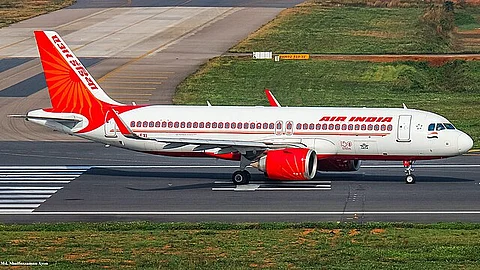

An Air India Airbus A320 (flight AI2744 from Kochi) veered off the runway while landing at Mumbai’s Chhatrapati Shivaji Maharaj International Airport during heavy rainfall on July 21. The aircraft, carrying passengers from southern Kerala, experienced a "runway excursion" after touchdown at 9:27 AM, briefly straying onto an unpaved area. Despite the incident, the plane taxied safely to the gate, and all 164 passengers and crew disembarked unharmed. The primary runway sustained minor damage, prompting the airport to activate its secondary runway for ongoing operations.
The Airbus A320neo (registration VT-TYA) suffered significant damage, including a ruptured engine cowling, cracks on the right engine nacelle, and three burst tires. Visuals showed grass and mud lodged in the wing and nose wheel areas, indicating contact with soft ground during the excursion. The four-year-old aircraft, formerly part of Vistara’s fleet before its merger with Air India, has been grounded for structural inspections. India’s Directorate General of Civil Aviation (DGCA) has launched an inquiry, derostering the two pilots pending investigation.
The incident occurred amid Mumbai’s intense monsoon downpour, with suburbs recording 115 mm of rain overnight. Reduced visibility and waterlogged runways complicated the landing. The airport had earlier issued advisories warning passengers of potential delays due to severe weather. While flight operations continued via the secondary runway, repairs to the primary runway’s edge lights and signage damaged during the excursion were underway.
This incident intensifies pressure on Air India, already under global scrutiny following the June crash of a Boeing 787 Dreamliner in Ahmedabad that killed 260 people. The European Union Aviation Safety Agency (EASA) is separately investigating Air India Express for alleged falsification of maintenance records related to Airbus A320 engine parts. India’s junior civil aviation minister revealed the airline received nine regulatory show-cause notices in the past six months, highlighting systemic safety concerns.